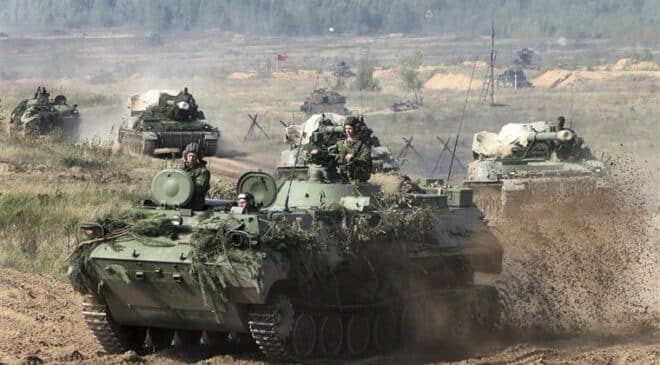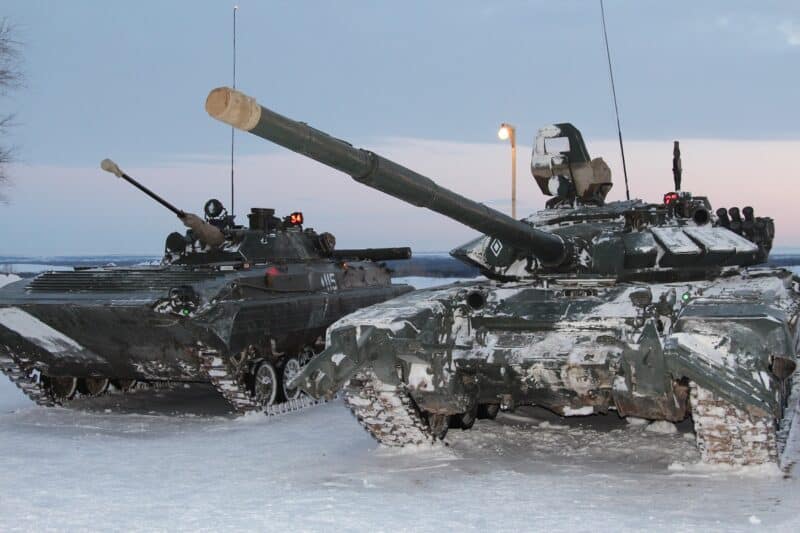A new tactical organization of Russian units engaged against Ukrainian forces is being deployed, according to documents seized by the Ukrainian military in recent weeks. This would be based on hybrid BTGs, simpler than traditional BTGs, but more efficient than the organic units used until now.
Since the beginning of the aggression against Ukraine, the Russian armies had already changed strategy three times for the overall conduct of operations. First, during the first ten days of the operation, they employed a strategy of decapitation of the political authorities and the Ukrainian government, notably by carrying out a major airborne operation on the Hostomel airfield north of Kyiv.
The three phases of the Russian offensive in Ukraine
After the failure of this maneuver, Moscow began a strategy aimed at the collapse of Ukrainian forces, by carrying out simultaneous and intensive offensives on all fronts, in the north in Kyiv and Kharkov, in the east in Donbass, and south from Crimea.
This double maneuver aimed to take Mariupol in order to link up with the forces of Donbass, and thus take Odessa to deprive Kyiv of access to the Sea and potentially make the link with Moldavian Transnistria.
From the end of March, faced with the very heavy losses suffered in application of these first two strategies, the Russian Armies began to turn towards a more conventional approach aimed at attrition of the Ukrainian forces, by creating lines of defense well prepared and by accompanying the Ukrainian offensives to cause them to crash against these lines, and thus make them also record heavy losses.
This third strategy was by far the most effective, even if Ukrainian combativeness and Western aid allowed Kyiv's forces to continue to inflict heavy losses on the entrenched Russian armies. It forced Moscow to transform, without recognizing it, what was to be a special military operation lasting a few weeks, into a war of attrition mobilizing the entire country, through a mobilization of men. like industries and economy.
Whatever one may say, the Russian withdrawals on the defensive lines of the Donbass, the Oblate of Zaporozhye as well as the withdrawal from Kherson south of the Dnieper, achieved their objectives, allowing the Russian forces to regroup on a line of well-prepared defense, while eroding part of the Ukrainian forces.
The use, probably at their expense, of Wagner's mercenaries to focus Kyiv's attention on Bakhmut, helped to reinforce this situation, by fixing numerous Ukrainian units, while allowing Russian units to reconstitute and equip themselves. .

A fourth strategic phase would have been initiated by the Russian armies recently. At least this is what we can deduce from the discovery by Ukrainian intelligence of a tactical manual detailing a new organization of contact units.
A new hybrid BTG
These new units are far from Tactical Group Battalion, or BTG, these Russian combined arms units so feared at the start of the conflict by analysts, even though they were almost never implemented. They also promise to be much more effective than the commitment of organic units observed since the start of the conflict,
This hybrid approach gives Russian units effective, but limited, combined arms capabilities, probably responding to the lack of experience and discipline observed, while giving them much more accomplished operational coherence.
Above all, beyond the new tactical capabilities that this organization provides to the units, this reorganization will allow the Russian command to implement a new strategy to deal with the Ukrainian armies, which can inform us about the war objectives now sought by Moscow.

75% of this article remains to read,
Subscribe to access it!
The Classic subscriptions provide access to
articles in their full version, and without advertising,
from 6,90 €.
Newsletter subscription
Register for the Meta-Defense Newsletter to receive the
latest fashion articles daily or weekly



[…] […]